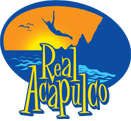Taxis in Acapulco

Taxis in Acapulco are ubiquitous. Think of swarms of locusts; then replace "locust" with blue and white Volkswagen beetles and you’ve gotten the idea. More than 6,000 taxis have been licensed in Acapulco. That may not be a lot for a place like New York, but Acapulco has really only three major avenues and an official population of 600,000. That's one taxi for every 99 inhabitants (not counting the driver).
How you feel about taxis depends on whether you drive your own car (share the streets with them) or use them as your basic means of transport. Drivers of private vehicles often feel outnumbered, crowded and menaced by them. (In fact, only 4 out of every 10 vehicles in Acapulco is a taxi.) Many taxi drivers are aggressive risk-takers who are always in a hurry. Not all are; many others are friendly, helpful and calm. Some can perform feats of daring that could qualify in Acapulco as an extreme sport. The economic reality of being a taxi driver is that you must constantly elbow out your competition, just to make as many short hauls as possible in your shift. You will have to pay for the car, the gas and use of the plates, and hope to have something left over for food and shelter at the end of 10 to 12 hours.
Taxis mainly come in three versions: the blue and white Volkswagen beetle ("Vocho"); the blue and white taxi that is not a Volkswagen beetle, but rather, a larger vehicle (like a large Ford or Chrysler); and the boxy yellow and white taxis, which are a different breed altogether. The blue and white Volkswagen are Acapulco's cheapest. The minimum daylight fare is $25 MXN, and most short hauls will not exceed $50 MXN. The larger blue and white taxis are more expensive. The boxy yellow and white taxis are called "collectivos" or "peseros." If you hail one, they will accept other passengers along the way. As many as five passengers will share the cab. These taxis always follow a pre-determined route, like a bus, and the name of the route is posted on the windshield. The main ons are from the center of town up Cuauhtémoc out to Renacimiento and from the Hornos beach area on the Costera to Acapulco Diamante, either Coloso (a large, working class neighborhood) or Colosio (a large, working class housing development). The fare is $12 pesos. Other colectivos follow other routes and will charge a fixed fare between $5 and $12 pesos, depending on the route.
To hail a taxi, use the approach you would use at home. Waves, shouts, whistles all work. The gesture for "come here" in Mexico is confusingly similar to "bye bye" in English (extended arm, hand waving up and down). The difference is that in Mexico the emphasis is on the downward motion (as if gesturing towards the feet), and usually involves bending the hand at the palm. If a taxi driver with no passenger sees you, he is likely to beat you to the draw and beep at you first to see if you need a ride. If you don't speak Spanish, many drivers will practice their English. If you speak Spanish, you may be in for a conversation ranging from the weather, to politics, to life in the States, to strip clubs.
The minimum fare ($25 pesos), which can go as high as $60 pesos during daylight hours for points inside the city proper, will rise by a factor of 50% at night, and by 100% after midnight, when the buses stop running and other forms of transport are scarce. Long hauls are a separate subject: A small taxi to the airport will cost $100 to $300 pesos. It is always a good idea to establish the fare before entering the taxi. If you think the fare quote is too high, offer what you think is correct. If the driver does not accept it, look for another taxi. Remember, there are hordes of them. For that reason, most drivers will not try to gouge you; but if you don't agree on a price beforehand, a few will take advantage and double or triple charge you at the end.
In 2004, Volkswagen shut down the last factory in the world that made the beetle, so perhaps 20 years from now Acapulco will again be beetle free.
